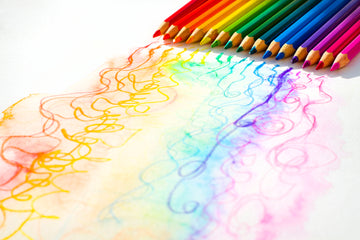Colored pencils are a versatile and popular medium, offering artists the opportunity to create a wide range of textures and depict various materials. In this article, we will delve into the exciting world of creating textures with colored pencils and discuss different techniques to represent diverse materials.
-
Texture Classification Textures can be categorized according to six main groups: people, animals & insects, fabrics & textiles, glass, stone, ceramics, wood & metal, food & beverages, and nature. By organizing them this way, artists can easily identify the type of texture they want to create. When learning to draw textures, patience and experimentation are essential elements. Embrace the process and use each attempt as a stepping stone in building your skills.
-
WOOD & METAL: Exercise in Textured Realism In this session, let's focus on creating an engaging wood grain texture with colored pencils and learn how to represent metal efficiently. To set up your exercise, gather colorful pencils from brands, like Faber-Castell or Prismacolor, to achieve a wide spectrum of rich hues.
Before drawing, visualize a worn wooden surface or a classic iron fence as your core inspirations. Practice the techniques explored by maintaining consistent pressure, adjusting your pencil angle, and sharpening as necessary. You can enhance the wood or metal textures by incorporating cross-hatching, smooth layering, and highlighting strategic locations.
- Translating Glass and Translucency Drawing glass demands that you recreate illusions of translucency, highlight, and reflection. To achieve desirable results, layer pencil applications carefully and blend them wisely. Consider applying a light over-layer of white once your base shading is complete and press gently with a blunt object to create subtle highlights reflecting the light source.
Examine a transparent glass with captivating color or choose an image featuring a crystal tumbler or a delicate vase; draw the outline and fill basic forms with base colors mimicking the glass's hues. Delicately add highlights at proper angles, taking care of details such as shadows and refracted light.
- Creating Fabric Complexities Drawing fabrics offer great potential for creating intricacy and visual appeal in your artwork by demonstrating a range of textures like smooth satin and a heavy tweed. To establish depth and form, use precise layering techniques, hue shading, and directional smoothing.
For reproducing satin, apply hard edges with solid colors and select minimal highlights, creating a two-dimensional appearance. On the opposite spectrum, for representing tweeds and velvets, use rich blending, directional streaks, and detailed shadings.
- Food Galore: Depicting Tantalizing Textures Fabulous food creations not only whet the appetite of onlookers but also show off diverse textures and materials using colored pencils. Consider practicing rendering textures of a donut 64 for the ultimate tutorial in handling light, shadow, and highlight work while adding realistic details on white icing, powdered sugar, and cocoa drizzle.
Recall the essential elements of colored pencil mastery as you progress – harnessing pressure, pencil angles, and point sharpness – master each technique to deliver stunning recreations of desired textures on any material.
In conclusion, colors pencils are an excellent versatile medium to explore vast combinations of textures and materials. Uncovering their secrets involves practice and adapting the core techniques to any challenge. Happy drawing!





